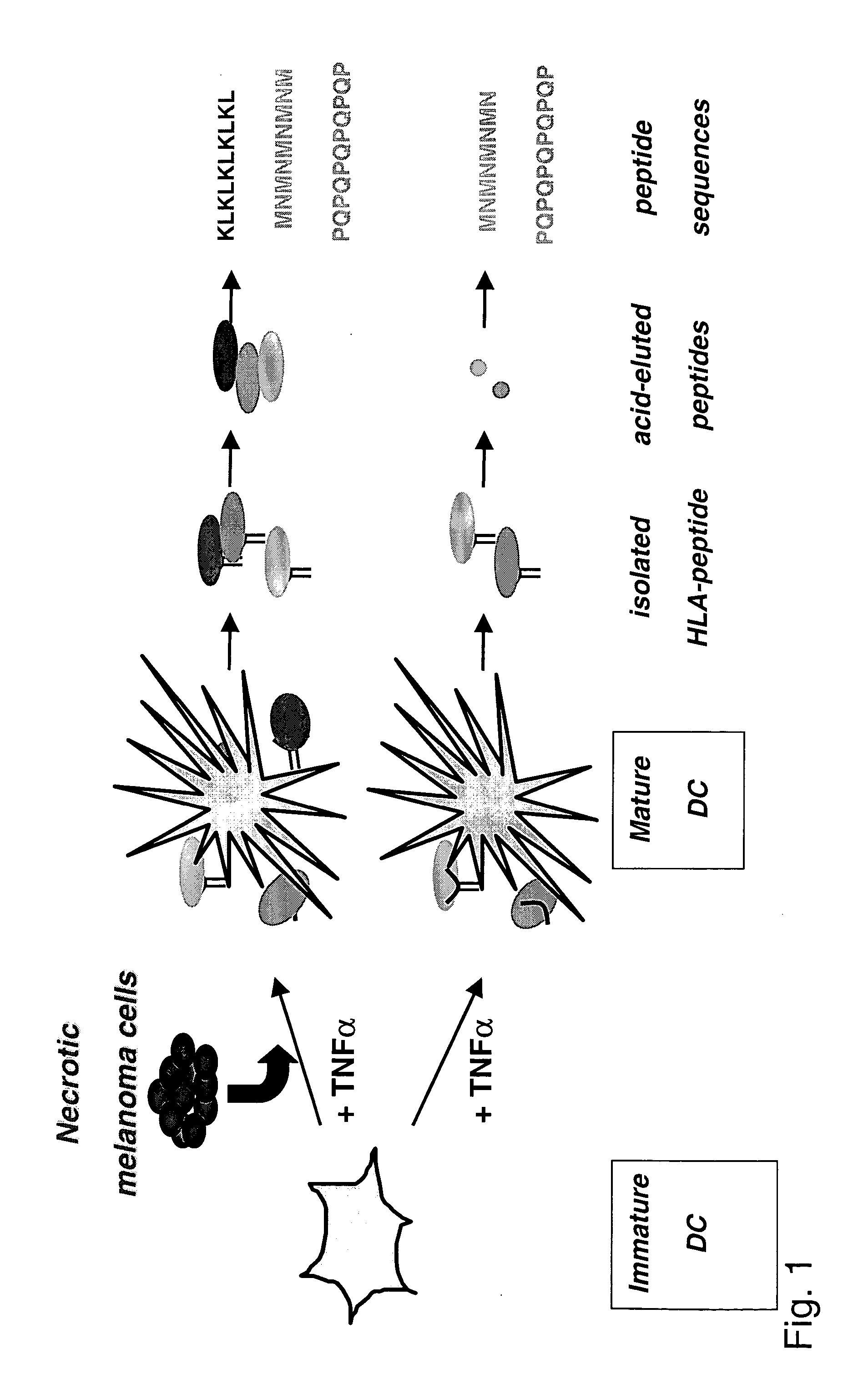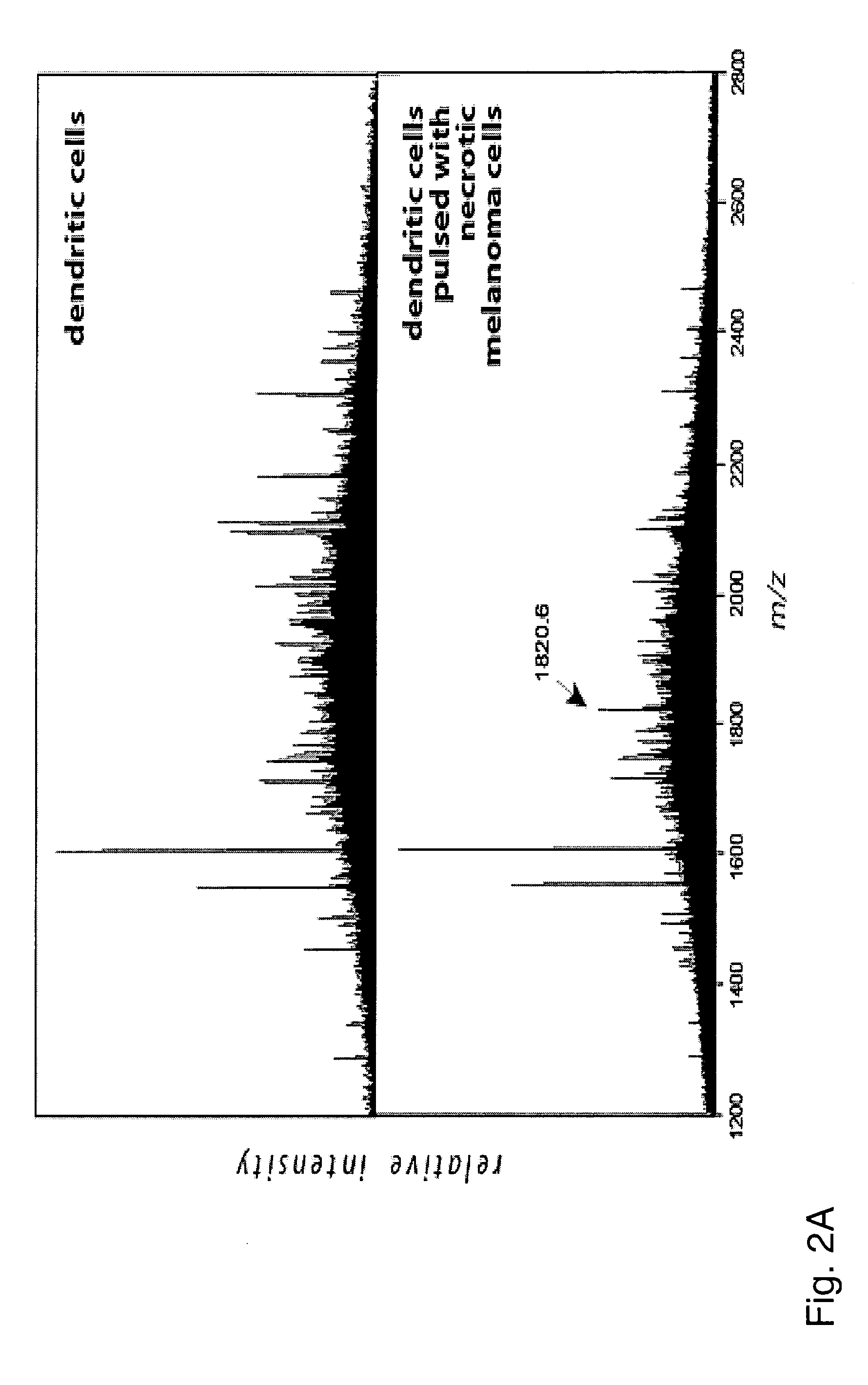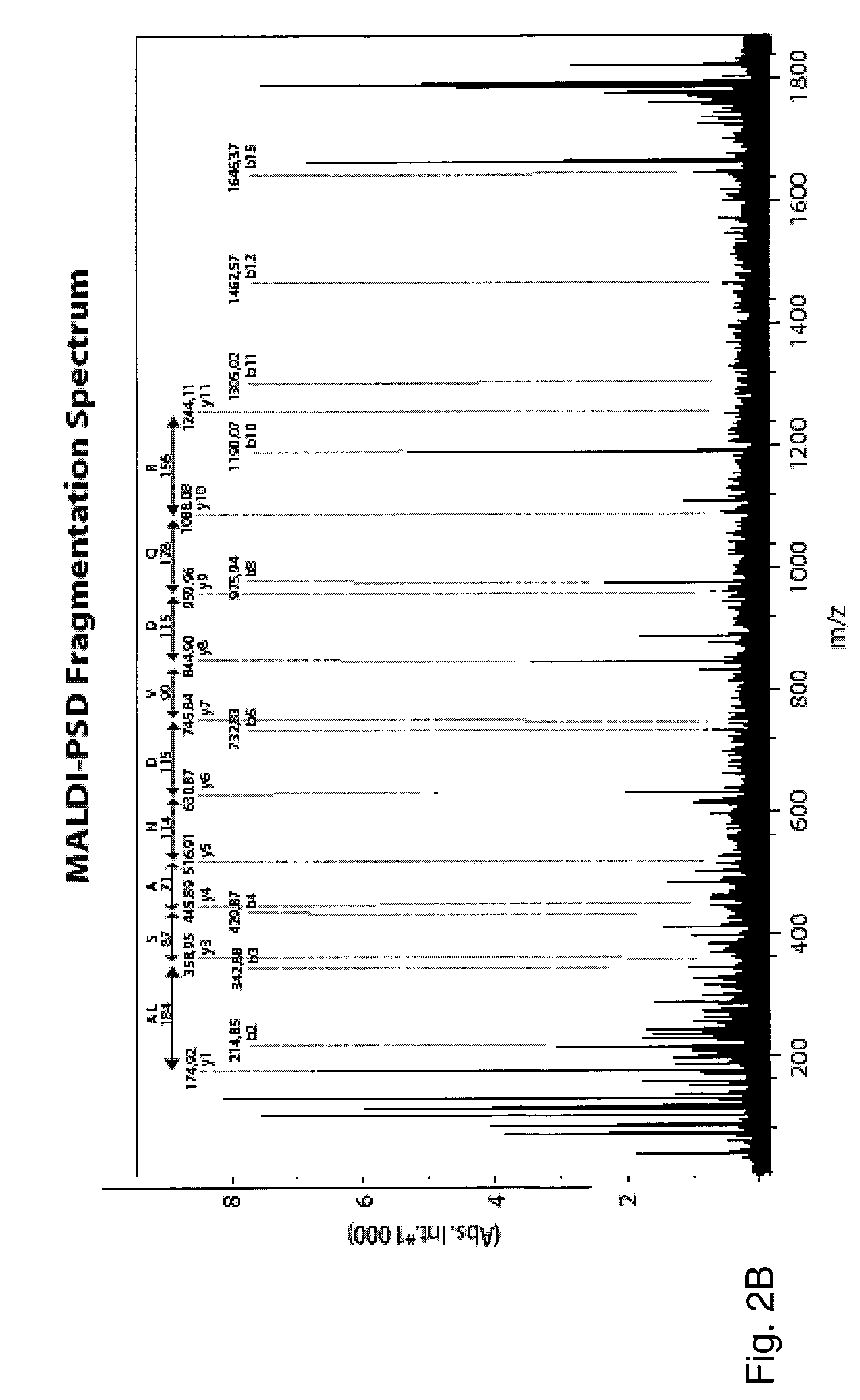Novel MHC II associated peptides
a peptide and associated technology, applied in the field of new mhc ii associated peptides, can solve the problems of ineffectiveness and insensitivity of peptide purification and sequencing techniques, and achieve the effect of reducing the number of peptides
- Summary
- Abstract
- Description
- Claims
- Application Information
AI Technical Summary
Benefits of technology
Problems solved by technology
Method used
Image
Examples
example 1
[0131] The above described methodology (FIG. 1) was used to identify novel HLA-DR-associated tumor peptides derived from (or induced by) the melanoma cell line, UKRV-Mel-15a. The melanoma cell line UKRV-Mel-15a does not express HLA-DR molecules by itself.
[0132] 3×106 cells dendritic cells were co-incubated with 9×106 necrotic cells of the melanoma line UKRV-Mel-15a and cultured for 24 hrs in the presence of TNFα (10 ng / ml). As a control, 3×106 cells dendritic cells were cultured in the presence of TNFα (10 ng / ml) only.
[0133] Both sets of dendritic cells were lysed in detergent TX-100 and HLA-DR molecules were precipitated using anti-DR mAb L243. HLA-DR associated peptides were eluted with 0.1% TFA and analyzed by MALDI-MS (FIG. 2A):
[0134] In this example, the HLA-DR associated peptides from both DC cultures were compared by MALDI-MS spectrometry and only the peptide signals contained in the profile of DCs pulsed with melanoma cells were used to identify new epitopes by successive...
example 2
[0138] The methodology was further used to identify peptides bound to HLA-DR molecules of dendritic cells (DCs) after TNFαα-induced maturation and exposure to necrotic melanoma cell line UKRV-Mel-20c. The melanoma cell line UKRV-Mel-20c does not express HLA-DR molecules by itself. Sequencing was done by high-throughput ion trap MS / MS technology.
[0139] Thus, 5×106 cells dendritic cells were co-incubated with 1.5×107 necrotic cells of the melanoma line UKRV-Mel-20c and cultured for 24 hrs in the presence of TNFα (10 ng / ml). As a control, 5×106 cells dendritic cells were cultured in the presence of TNFα (10 ng / ml) only.
[0140] Both sets of dendritic cells were lysed in detergent TX-100 and HLA-DR molecules were precipitated using anti-DR mAb L243. HLA-DR associated peptides were eluted with 0.1% TFA and analyzed by LC-high-throughput ion trap MS / MS technology.
[0141] The peptide sequences identified from unpulsed DCs (control) were compared with the peptide sequences identified from D...
example 3
[0147] A third melanoma cell line, Ma-Mel-18a, was utilized to identify novel HLA-DR-associated tumor peptides. The melanoma cell line Ma-Mel-18a does not express HLA-DR molecules by itself.
[0148] Thus, 4×106 cells dendritic cells were co-incubated with 1.2×107 necrotic cells of the melanoma line Ma-Mel-18a and cultured for 24 hrs in presence of TNFα (10 ng / ml). As a control, 4×106 cells dendritic cells were cultured in the presence of TNFα (10 ng / ml) only.
[0149] Both sets of dendritic cells were lysed in detergent TX-100 and HLA-DR molecules were precipitated using anti-DR mAb L243. HLA-DR associated peptides were eluted with 0.1% TFA and analyzed by LC-high-throughput ion trap MS / MS technology.
[0150] The peptide sequences identified from the control (unpulsed DCs) were compared with the peptide sequences identified from DCs pulsed with necrotic Ma-Mel-18a (Table 3): In the absence of Ma-Mel-18a cells 155 individual self-peptide sequences derived from 75 self-proteins were found...
PUM
| Property | Measurement | Unit |
|---|---|---|
| pH | aaaaa | aaaaa |
| concentration | aaaaa | aaaaa |
| pH | aaaaa | aaaaa |
Abstract
Description
Claims
Application Information
 Login to View More
Login to View More - R&D
- Intellectual Property
- Life Sciences
- Materials
- Tech Scout
- Unparalleled Data Quality
- Higher Quality Content
- 60% Fewer Hallucinations
Browse by: Latest US Patents, China's latest patents, Technical Efficacy Thesaurus, Application Domain, Technology Topic, Popular Technical Reports.
© 2025 PatSnap. All rights reserved.Legal|Privacy policy|Modern Slavery Act Transparency Statement|Sitemap|About US| Contact US: help@patsnap.com



